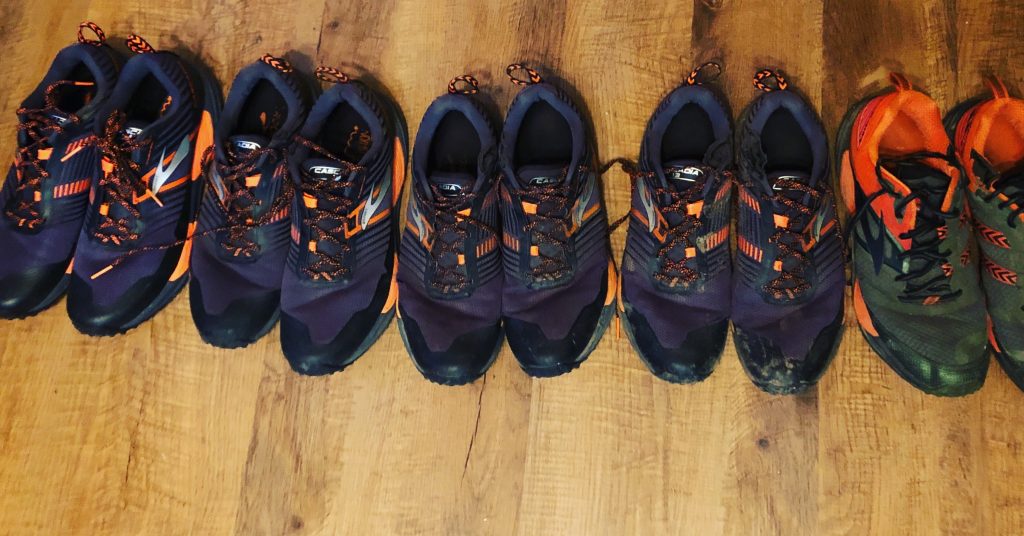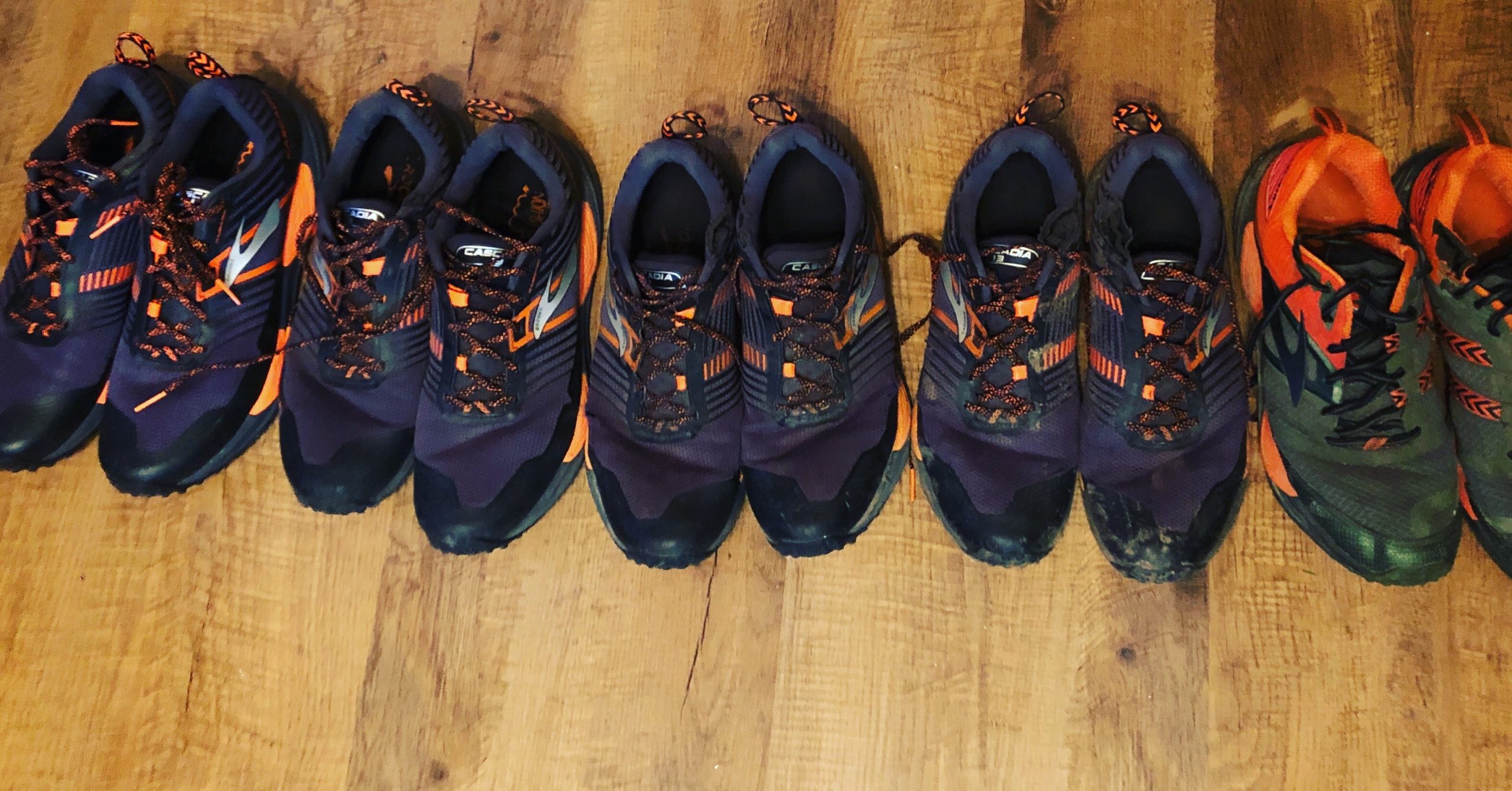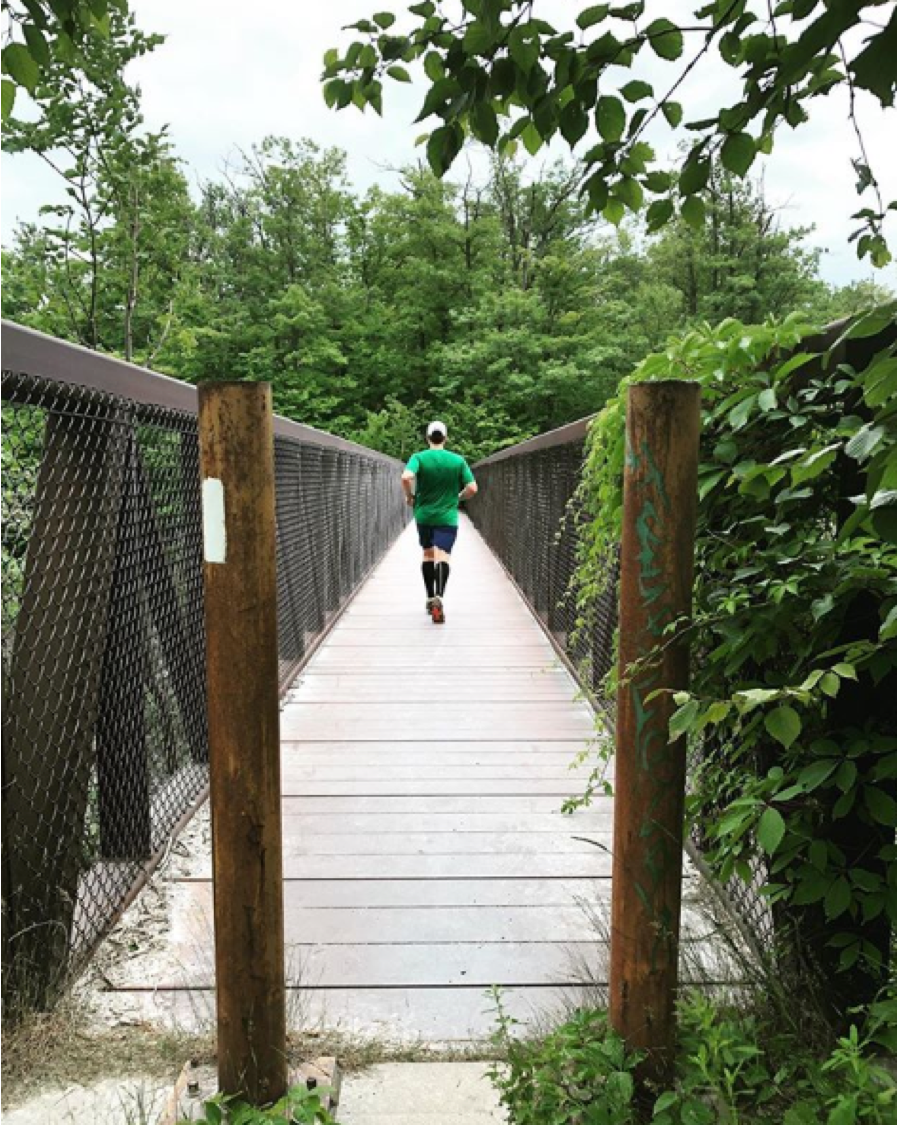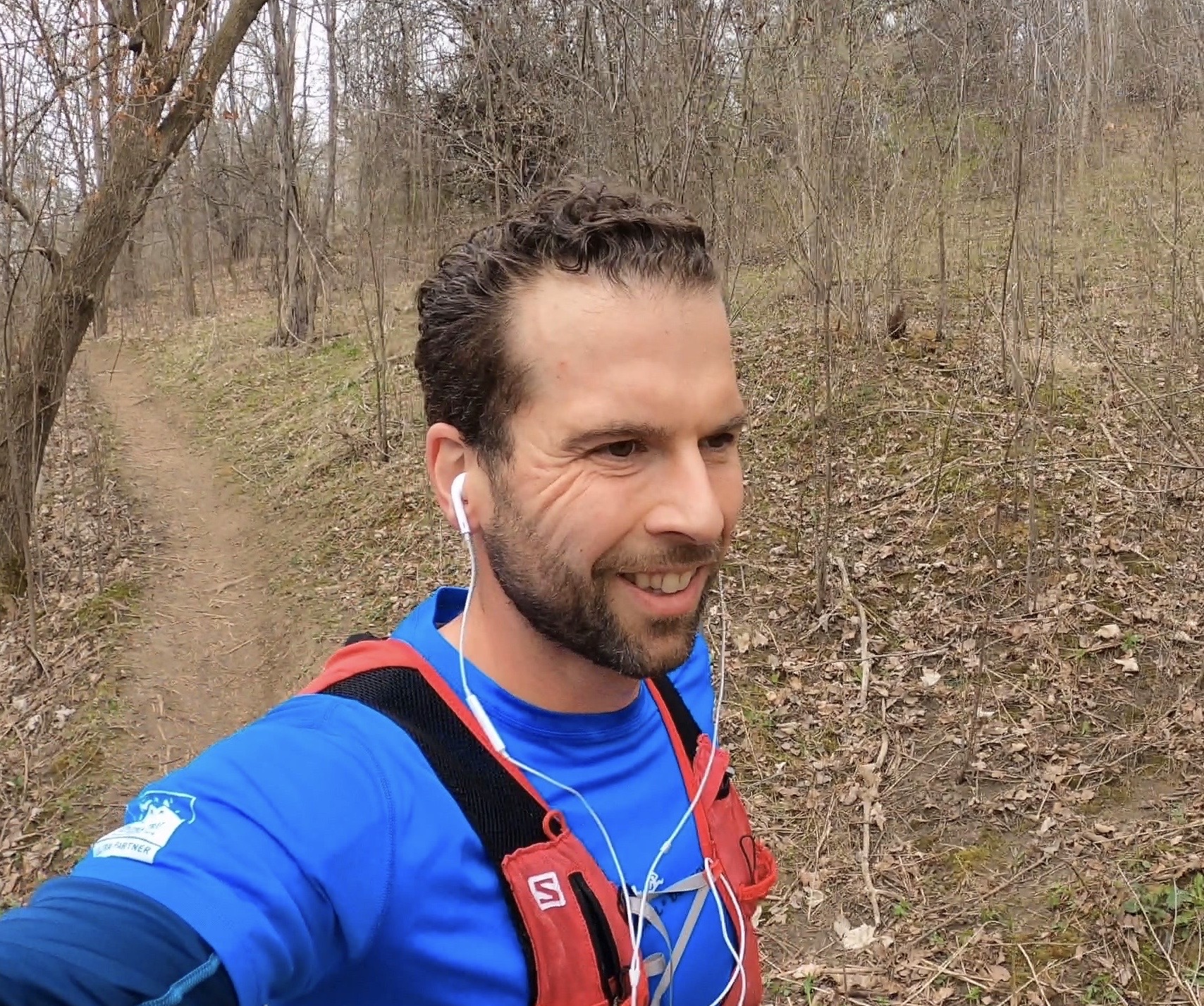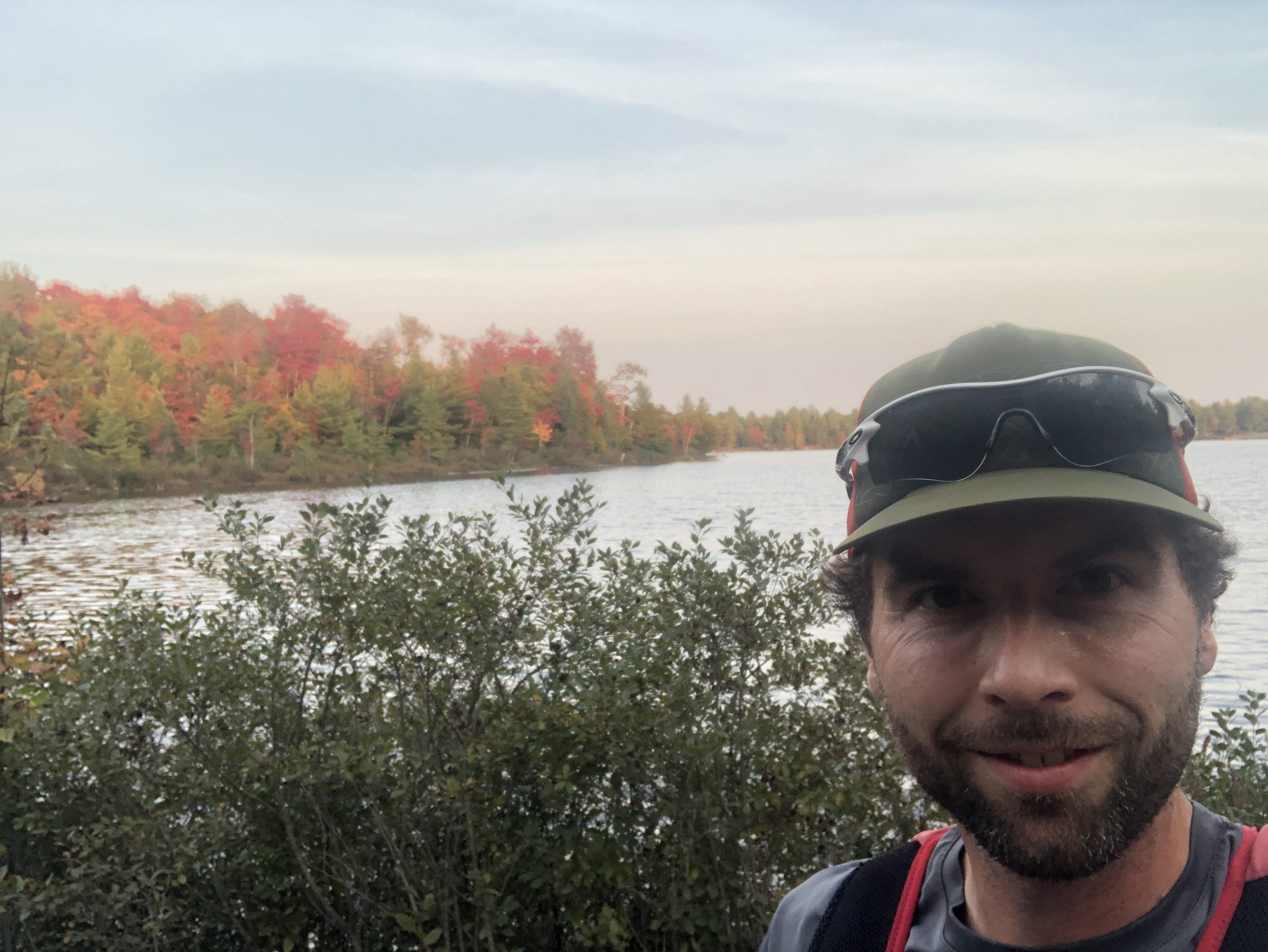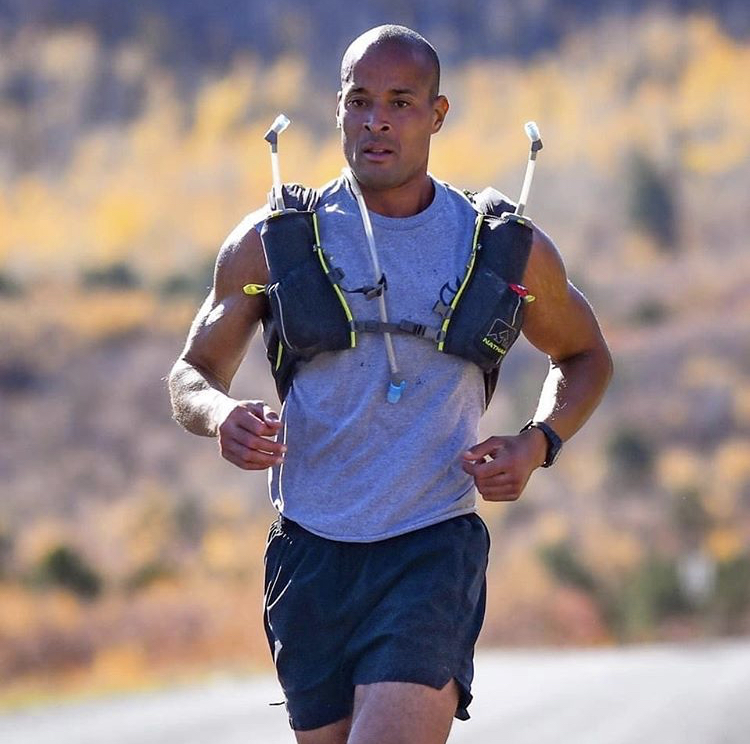The great thing about trail running is that you only need a pair of shoes to start. Some runners even run barefoot – which is not a great option for our Canadian winters. It is important to have a good trail shoe to keep you safe and stable on the trails. I evaluate trail running shoes on their outsoles, the body of the shoe and the weight.
Outsoles:
Trail shoes have a more aggressive tread on the outsole compared to regular running shoes. The individual grips on the outsoles are called lugs. Longer lugs help with softer surfaces like mud and snow, while shorter lugs help with harder surface like hard packed dirt trails or gravel.
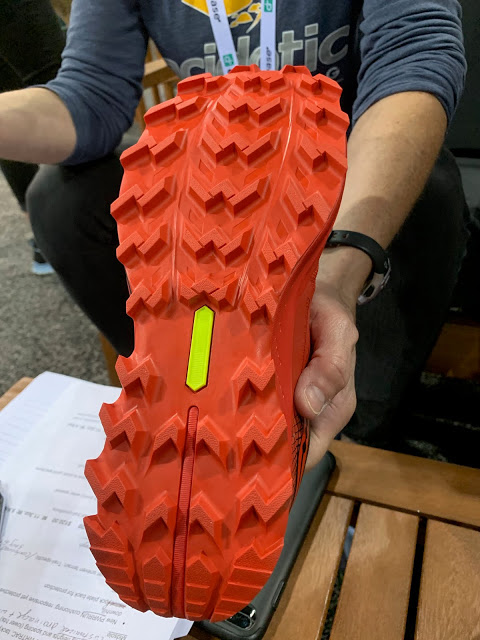
Many ultra distance runners wear Hoka brand shoes which have a very large amount of cushioning in the outsoles. Hoka’s philosophy is that your feet need extra cushioning for the long hours of an ultra-marathon. Hokas are popular among ultra-runners and a good number of my friends run in them. I ran in Hokas for a year and did not have a good experience. I bought two pairs of the Challenger ATR 2 and I got significant sized holes in the sides of the shoes after only two months. I also developed small knee strains and pains.
There is another school of thought that you should run with the least amount of cushioning possible. As mentioned, some runners go as far as to run barefoot. Barefoot running is explored in depth in Christopher McDougall’s amazing book, Born to Run. McDougall recounts getting frequent injuries from long distance running in traditional running shoes. McDougall makes the switch to barefoot running which he credits for helping him run ultra-marathon distances.
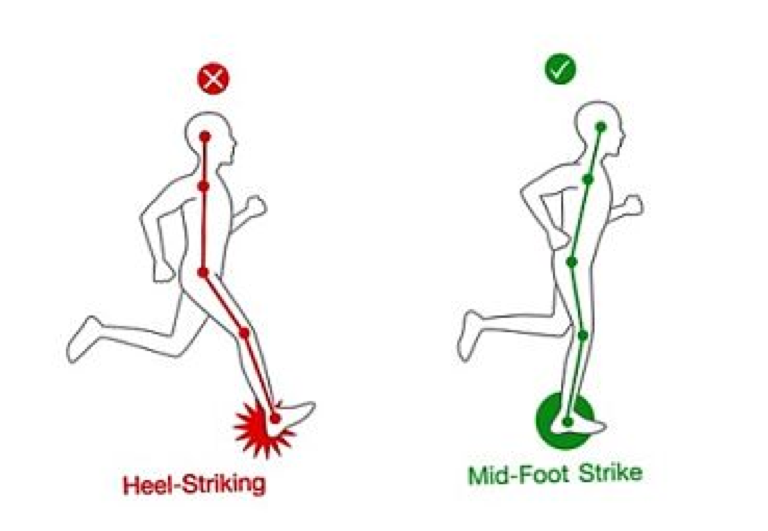
McDougall argues that most running shoes have too much padding which causes heel striking while running. Ideal running form has the middle of your foot striking the ground which evenly distributes impact absorption over your foot, ankle, knee and hip. Heel striking is problematic because you do not absorb impact correctly across your leg joints which can lead to common running injuries.
Heel striking is painful but traditional shoes have so much cushioning that you don’t feel it. You actually feel the pain from heel striking when you run barefoot and consequently, you correct to a mid-foot strike to alleviate the pain. Barefoot running is not the only way to control for heel striking. Most runners will be fine in trail shoes with a regular amount of cushioning in the sole. You can avoid heel striking by shortening your stride and by concentrating on your running form.
Foot protection is also very important when considering a trail shoe. Trail shoes with stiffer outsoles or rock plates are better suited for running rocky terrain. Shoes with softer outsoles are more suited for less technical trails where you won’t be running over hard edges.

My shoe of choice is the Brooks Cascadia 13. I have been running in Cascadias for over two years with minimal strains and without any injuries. Brooks refers to the Cascadia as the SUV for your feet and that is an accurate description. The shoe is suitable for most terrain, ranging from hard packed to rocky and muddy. The Cascadia has a regular amount of cushioning and protection in the outsoles with medium sized lugs. I prefer to use one shoe for all types of terrain but some runners have different shoes for mud, mountains, snow, etc.
Body of Shoe:
I evaluate the body of a trail shoe by its resistance to wear, how fast it gets dry after getting wet and the size of its toe box.
Trail shoes should be reinforced at the common wear points: the toe cap, the articulation point where the toes meet the foot and the heel collar. Good trail shoes stand up to the tough conditions of trail running and last for at least four months of heavy running. I like the Cascadia 13 because it is reinforced with a plastic covering on the toe cap and toe articulation point. This shoe wears out quickly at the heel collar but that does not affect its performance.
Getting wet shoes is very common on the trails. It’s important that your shoe drains well so that it doesn’t get too heavy. Your shoe should also dry in a reasonable amount of time. The longer you run with wet feet, the more likely that you will get blisters.
I always evaluate the size of the toe box of a shoe because your toes get pushed into the front of your shoe while running downhill. Your feet also swell by a significant amount during ultra-marathons. I have lost a good number of toenails while running in shoes with small toe boxes.
Weight:
Shoe weight is an important consideration, especially for the 100 mile distance. In general, the more protection, the heavier the shoe. It’s important to find the right balance of weight and protection.
Winter Running:
I continue to run in Cascadias in the winter with a medium thickness sock. I recently ran a race at -9 degrees Celsius with a Smartwool sock. The sock didn’t bunch up and it kept my feet warm. The Cascadia’s medium sized lugs handled the snow packed trails well but longer lugs would have been helpful. I sometimes use Yaktrax for icy conditions. Yaktrax are traction devices that I pull over the bottom of my outsoles. I don’t like running in Yaktrax though since they feel clunky on my feet and change the way that I run. Some runners will even put small screws directly into their outsoles. I like to run in Gore-Tex lined shoes when the temperatures get really cold, -20 degrees Celsius or more. Gore-Tex is water proof and it keeps your feet dry and warm.
Trusted Brands:
Brooks is my brand of choice but Salomon and Altra have very good reputations.
Salomon is the top trail running brand. I have a Salomon hydration pack and ski coat and both are top quality. Salomon sponsors most of the top trail runners and the company works closely with these athletes to develop shoes. The Salomon S-lab shoe is a top notch all around shoe. I would love to run in these shoes but they are too narrow for me.
Altra is another top brand. Altra is a relatively new brand with a good reputation – I see more and more runners wearing Altras. Altra shoes have large toe boxes and a zero drop outsole. Zero drop means that there is no difference in height between the heel and toe. Zero drop gives you similar benefits to running barefoot.
Conclusion:
If this all seems complicated, don’t worry there are some great resources to help you find the right trail shoe. The staff at Mountain Equipment Coop (MEC) are very helpful and MEC has a great selection of trail shoes. There are also some great online resources for trail shoe reviews like The Ginger Runner Youtube channel.
Expect some trial and error before finding the right trail shoe. I went through three different shoes before finding the Cascadia. I am now running in my fifth pair of Cascadias.
